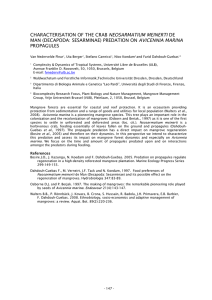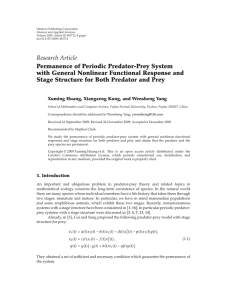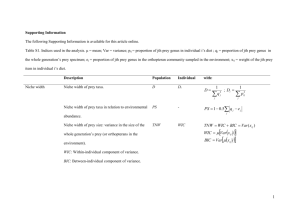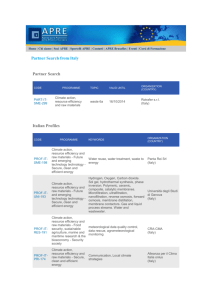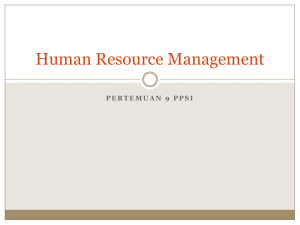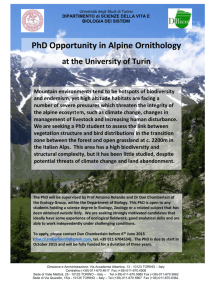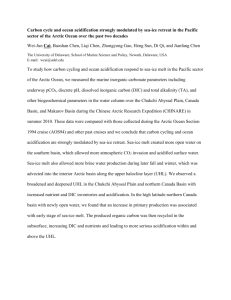gcb13083-sup-0001-TableS1
advertisement
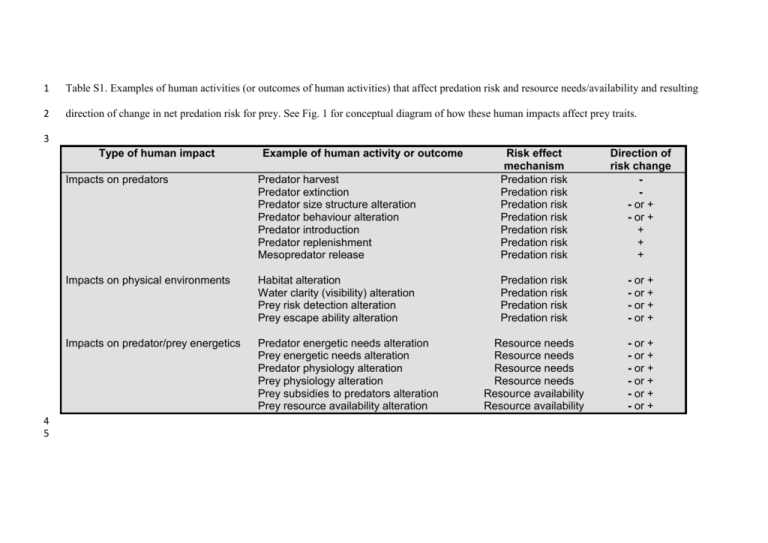
1 Table S1. Examples of human activities (or outcomes of human activities) that affect predation risk and resource needs/availability and resulting 2 direction of change in net predation risk for prey. See Fig. 1 for conceptual diagram of how these human impacts affect prey traits. 3 Type of human impact 4 5 Example of human activity or outcome Impacts on predators Predator harvest Predator extinction Predator size structure alteration Predator behaviour alteration Predator introduction Predator replenishment Mesopredator release Risk effect mechanism Predation risk Predation risk Predation risk Predation risk Predation risk Predation risk Predation risk Direction of risk change - or + - or + + + + Impacts on physical environments Habitat alteration Water clarity (visibility) alteration Prey risk detection alteration Prey escape ability alteration Predation risk Predation risk Predation risk Predation risk - or + - or + - or + - or + Impacts on predator/prey energetics Predator energetic needs alteration Prey energetic needs alteration Predator physiology alteration Prey physiology alteration Prey subsidies to predators alteration Prey resource availability alteration Resource needs Resource needs Resource needs Resource needs Resource availability Resource availability - or + - or + - or + - or + - or + - or + 1 References 2 3 Allan BJM, Domenici P, McCormick MI, Watson SA, Munday PL (2013) Elevated CO2 affects predator-prey interactions through altered performance. PloS One, 8. 4 5 Dixson DL, Jennings AR, Atema J, Munday PL (2014) Odor tracking in sharks is reduced under future ocean acidification conditions. Global Change Biology, 1–9. 6 7 Embar K, Kotler BP, Mukherjee S (2011) Risk management in optimal foragers: the effect of sightlines and predator type on patch use, time allocation, and vigilance in gerbils. Oikos, 120, 1657–1666. 8 9 Finstad AG, Einum S, Forseth T, Ugedal O (2007) Shelter availability affects behaviour, size-dependent and mean growth of juvenile Atlantic salmon. Freshwater Biology, 52, 1710–1718. 10 Grabowski JH (2004) Habitat complexity disrupts predator-prey interactions but not the trophic cascade on oyster reefs. Ecology, 85, 995–1004. 11 12 Leduc AOHC, Munday PL, Brown GE, Ferrari MCO (2013) Effects of acidification on olfactory-mediated behaviour in freshwater and marine ecosystems: a synthesis. Phil. Trans. R. Soc. B, 368, 1–14. 13 Madin JS, Donnell MJO, Connolly SR (2008) Climate-mediated mechanical changes to coral assemblages. Biology Letters, 1:4. 14 15 Munday PL, Pratchett MS, Dixson DL, Donelson JM, Endo GGK, Reynolds AD, Knuckey R (2013) Elevated CO2 affects the behavior of an ecologically and economically important coral reef fish. Marine Biology, 160, 2137–2144. 16 17 Munday PL, Cheal AJ, Dixson DL, Rummer JL, Fabricius KE (2014) Behavioural impairment in reef fishes caused by ocean acidification at CO2 seeps. Nature Climate Change, 4, 487–492. 1 2 Peckarsky BL, Abrams PA, Bolnick DI et al. (2008) Revisiting the classics: considering nonconsumptive effects in textbook examples of predator-prey interactions. Ecology, 89, 2416–25. 3 Schmitz O (1998) Direct and indirect effects of predation and predation risk in old-field interaction webs. The American Naturalist, 151, 327–42. 4 5 Trussell GC, Ewanchuk PJ, Matassa CM (2006) Habitat effects on the relative importance of trait- and density-mediated indirect interactions. Ecology Letters, 9, 1245–52. 6 Weissburg M, Smee D, Ferner M (2014) The sensory ecology of nonconsumptive predator effects. The American Naturalist, 184, 141–157. 7 8
